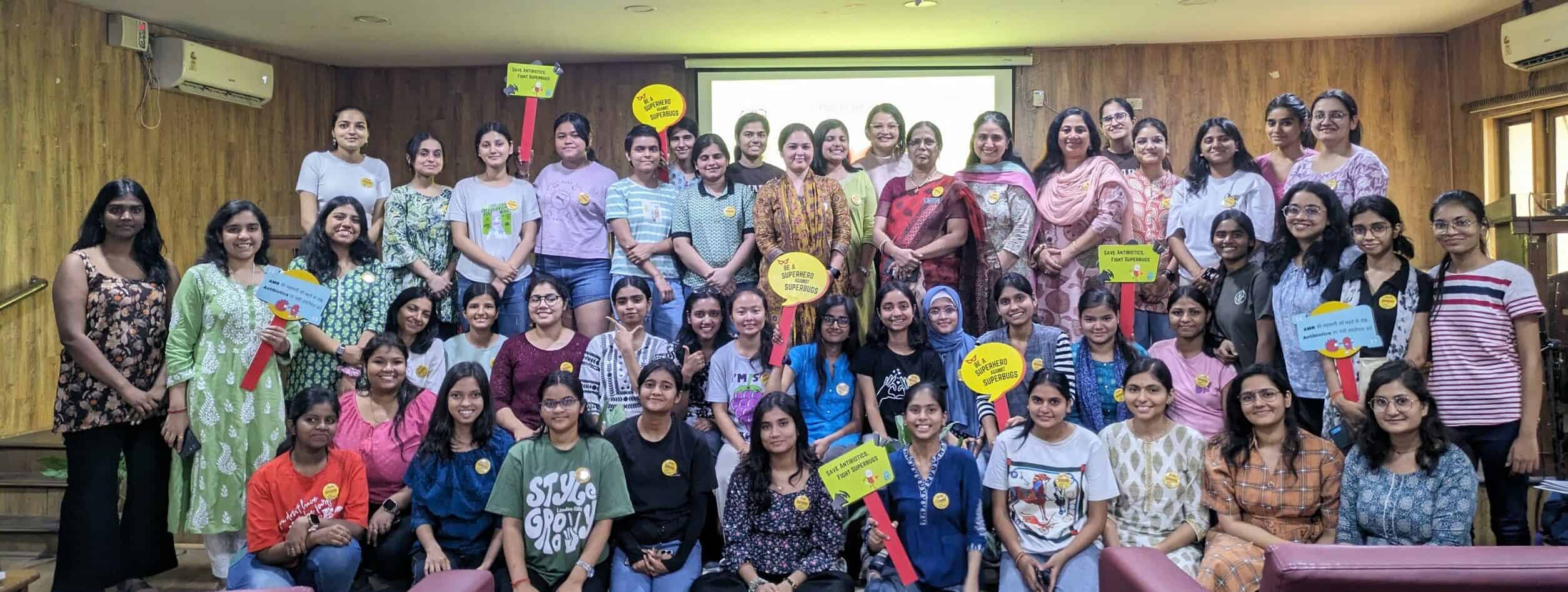It was during my final year of college when I first truly grasped the gravity of Antimicrobial Resistance (AMR). Sitting in a packed classroom, I listened as experts discussed the silent yet pervasive threat posed by AMR. This issue is no longer a topic of academic discussion; it’s a pressing concern in public health, threatening our lives. The World Health Organization (WHO) has aptly termed AMR a ‘Silent Pandemic,’ emphasising the urgency of raising public awareness and addressing this challenge head-on.
Superheroes Against Superbugs (SaS) is leading the charge in this crucial battle by strategically spreading awareness about AMR among students, academic communities and the general public. I had a transformative experience participating in one of their workshop series, which SaS conducts at various educational institutions, from schools to colleges, to mobilise youth against AMR. This day-long workshop was a perfect blend of informative sessions and engaging activities, designed to convey a comprehensive understanding of AMR that we can relate to on a personal and professional level.
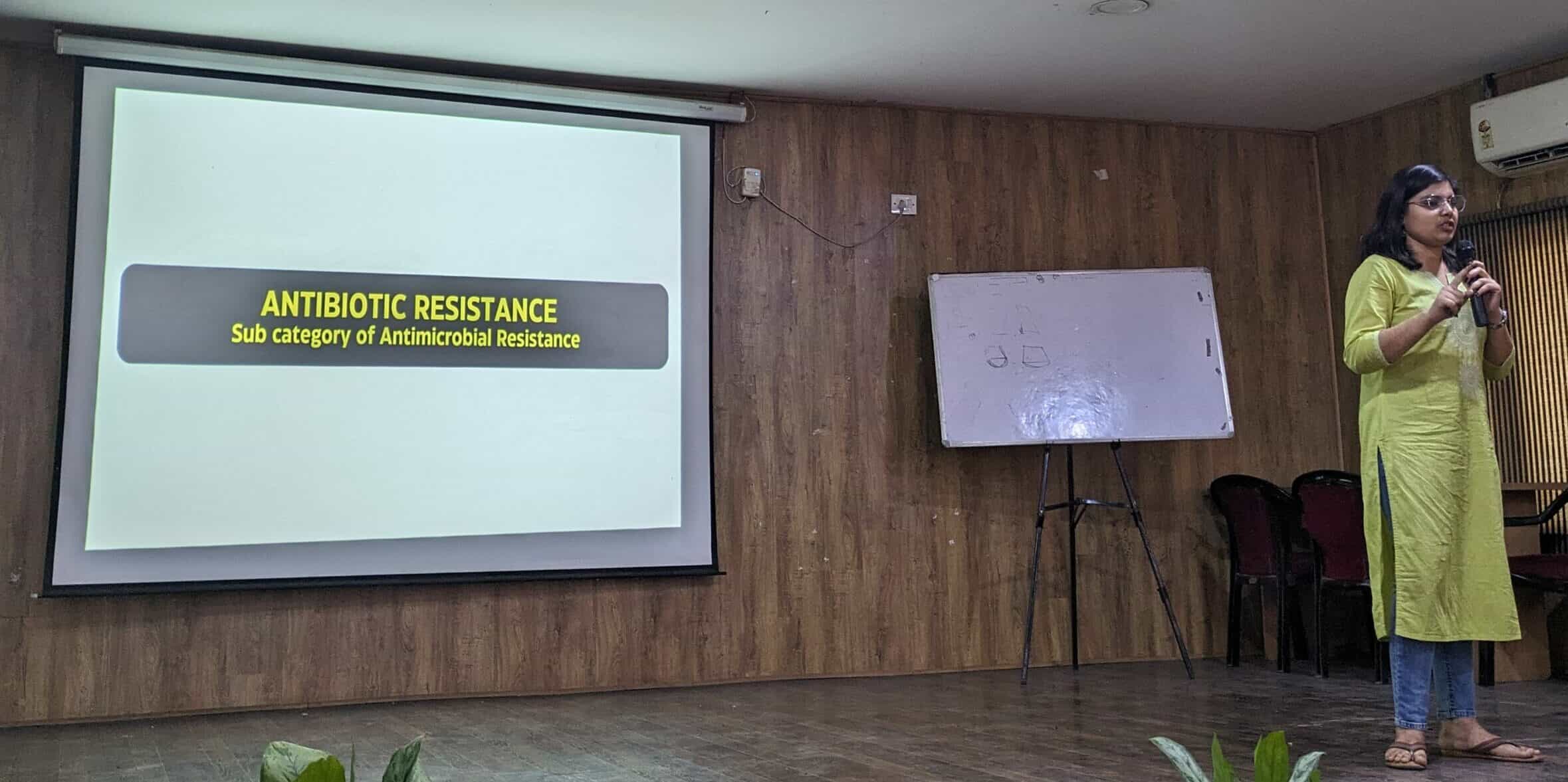
The workshop, held at my college, Daulat Ram College, University of Delhi, began by introducing AMR to students from both science and non-science backgrounds. We learned about the concept of ‘Superbugs’—microorganisms that resist antimicrobial treatments—and the urgent need to become ‘Superheroes’ to combat them. The session elucidated how antimicrobial-resistant bacteria can render medications ineffective, leading to persistent symptoms and prolonged illnesses. The problem was presented so effectively using activities and case studies that it has left a lasting impression on me, enabling me to recall key aspects of AMR easily and motivating me to actively contribute to SaS’ mission.
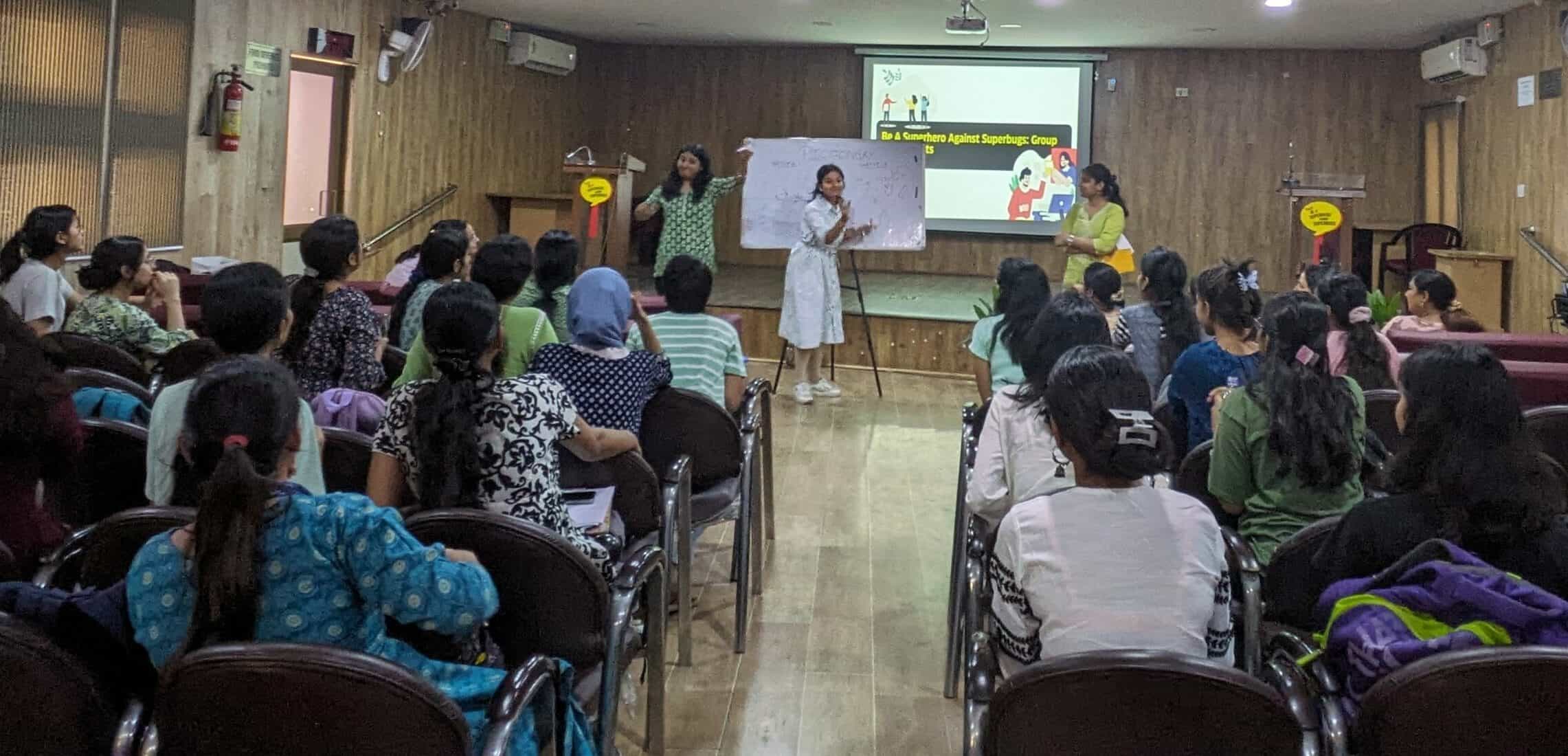
The workshop covered a broad range of topics, from the basics of AMR to preventive measures. We explored how incomplete medication courses, self-medication, over-the-counter antibiotic purchases, using multiple drugs for common symptoms, and poor hygiene practices contribute to AMR. A particularly eye-opening revelation was that even antibiotics in eye drops can contribute to resistance.
SaS’ approach to behaviour change involved well-structured case studies addressing various aspects of the problem. Active engagement was fostered through activities like poster-making and proposals for forming an AMR Club within the college. Working in groups, we brainstormed, shared perspectives, and committed to taking measures to combat AMR. The posters we created were a testament to the workshop’s impact, each uniquely conveying the unifying message: Superheroes Against Superbugs.
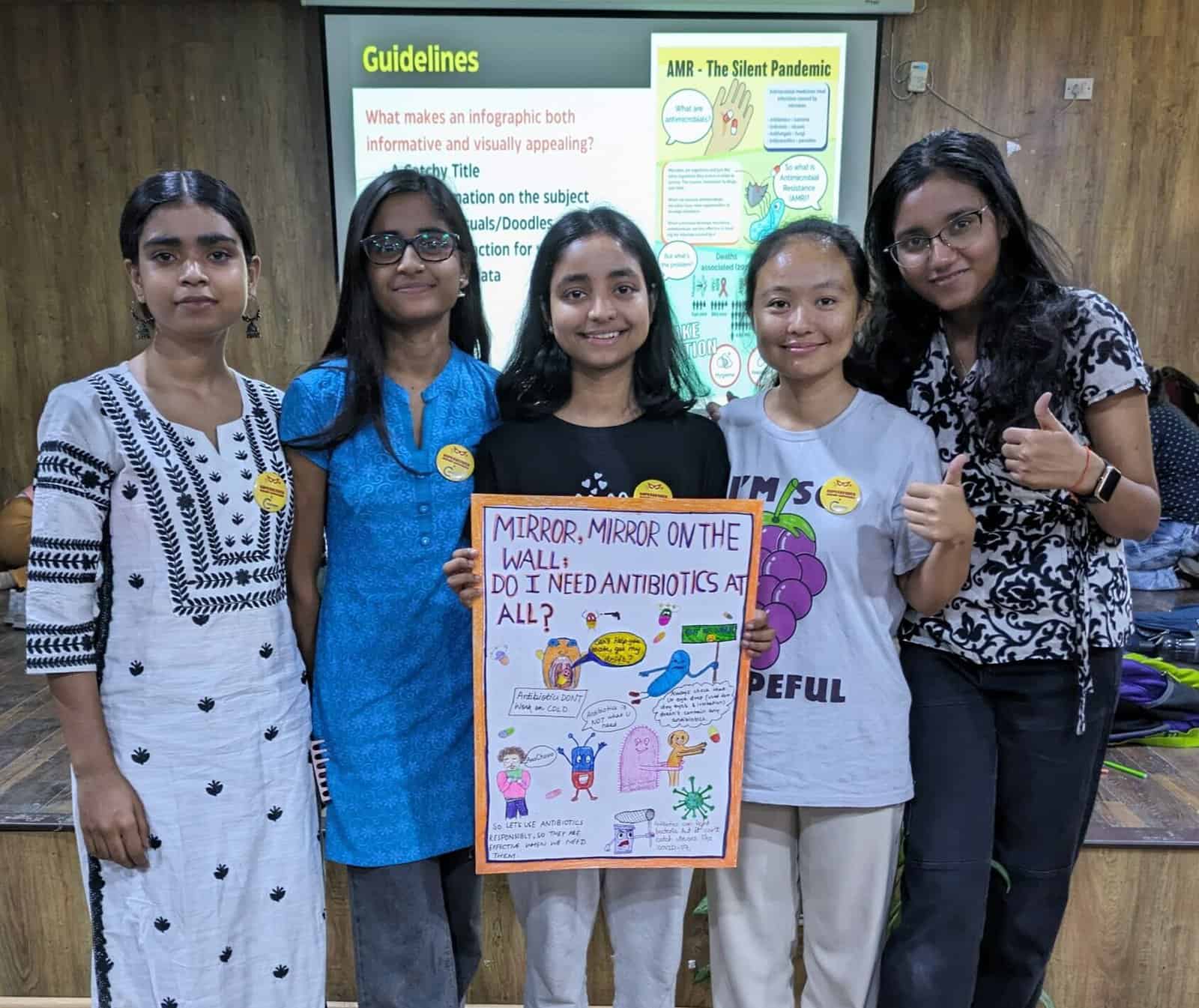
As an undergraduate science student, I was aware of the concept of bacterial resistance. But the SaS workshop deepened my understanding through its structured and interactive approach and by humanising AMR. I listened to a few lectures on AMR before as well but the real transformation happened with SaS due to their approach towards highlighting this issue, which exclusively came through case studies and on spot situation handling training. The team that delivered the lectures was exceptional in its knowledge and the delivery was highly creative. It helped me revive my latent understanding of this important issue.
The workshop sparked ongoing conversations and inspired several students to work on establishing an AMR Club. Even students from non-science backgrounds embraced the role of ‘Superheroes’, proudly wearing wristbands and badges that marked their newfound awareness after twelve hours of participation.
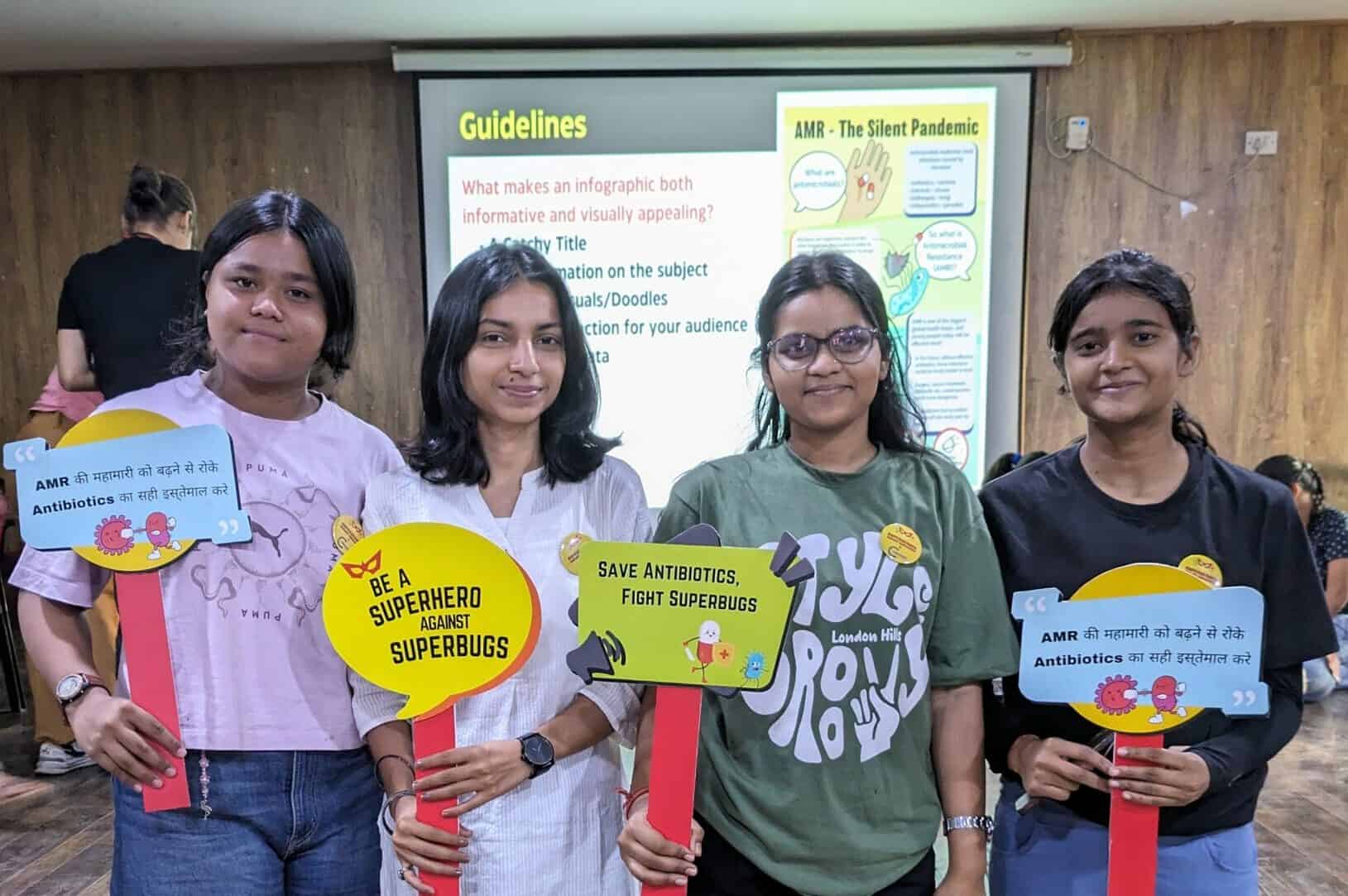
SaS’ efforts in educating and engaging students are a critical step towards breaking the silence around AMR and fostering a generation ready to tackle this silent pandemic head-on. I have joined them in this fight against superbugs; what about you?
